
Wilhelm Guddorf was a Belgian journalist, anti-Nazi and resistance fighter against the Third Reich. Guddorf was a leading member of a Berlin anti-fascist resistance group that was later called the Red Orchestra by the Abwehr. Guddorf was the editor of the Marxist-Communist Die Rote Fahne newspaper.
Albert Hensel was a German Communist executed under the Nazis. He was a member of the Communist Party of Germany and along with numerous other resistance fighters was executed by the Nazis. Hensel was born in Dresden where he and fellow communist members began their work against the Nazi regime.
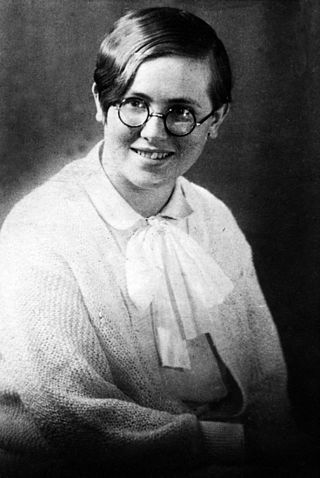
Judith Auer was a resistance fighter against the Nazi régime in Germany.
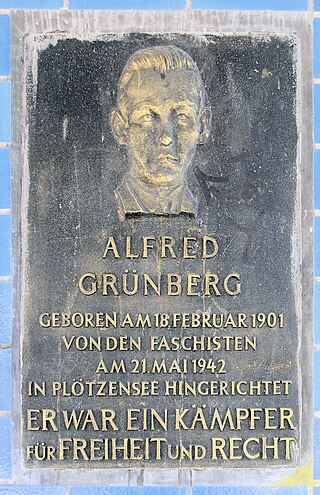
Alfred Grünberg was a worker, a member of the Communist Party of Germany (KPD) and a resistance fighter against the Nazi régime.
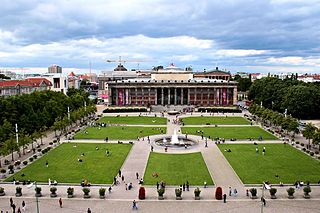
The Lustgarten is a park in Museum Island in central Berlin at the foreground of the Altes Museum. It is near the site of the former Berliner Stadtschloss of which it was originally a part. At various times in its history, the park has been used as a parade ground, a place for mass rallies and a public park.

Plötzensee Prison is a men's prison in the Charlottenburg-Nord locality of Berlin with a capacity for 577 prisoners, operated by the State of Berlin judicial administration. The detention centre established in 1868 has a long history; it became notorious during the Nazi era as one of the main sites of capital punishment, where about 3,000 inmates were executed. Famous inmates include East Germany's last communist leader Egon Krenz.

The Soviet Paradise was the name of an exhibition and a propaganda film created by the Department of Film of the propaganda organisation (Reichspropagandaleitung) of the German Nazi Party (NSDAP), and was displayed in the larger cities of the Reich and occupied countries: Vienna, Prague, Berlin and others. Its goal was to show "poverty, misery, depravity and need" of the nations in the Soviet Union under "Jewish Bolshevist" rule and thus to justify the war against the Soviet Union. The accompanying guide for the exhibition noted, "The present Soviet state is nothing other than the realization of that Jewish invention".

Marianne Baum was a German communist and anti-Nazi. She was executed after an attack on a propaganda show in Berlin.

Margaretha "Greta" Kuckhoff was a Resistance member in Nazi Germany, who belonged to the Communist Party of Germany and the NKVD spy ring that was dubbed the Red Orchestra by the Abwehr. She was married to Adam Kuckhoff, who was executed by the Third Reich. After the war, she lived in the German Democratic Republic, where she was president of Deutsche Notenbank from 1950 to 1958.
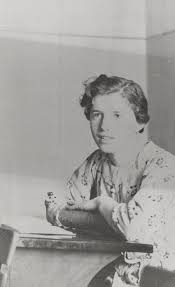
Hildegard Löwy was a Jewish German office worker who became involved in anti-Nazi resistance. She was guillotined at Plötzensee Prison.

Marianne Joachim was a Jewish German resistance activist during the Nazi years. She was executed at Plötzensee on 4 March 1943 following an arson attack the previous summer on the party propaganda department's "Soviet Paradise" exhibition in Berlin's "Lustgarten" pleasure park.

Heinz Günther Joachim was a German music student. He played the clarinet. In 1941 he became involved with an anti-government resistance group. He was arrested at work on 22 May 1942 and murdered/executed at Plötzensee Prison on 18 August 1942.

Bruno Baum was a German official for the Communist Party of Germany and Socialist Unity Party of Germany. He also served as a resistance fighter during World War II.
Lothar Salinger was a politically engaged German worker and part of the Jewish youth movement in Berlin, who became a resistance activist and an associate of Herbert Baum. He was executed by guillotine at the Plötzensee execution facility. His fiancée was also an anti-Hitler activist but she managed to outlive the régime, living "illegally" (unregistered) in Berlin, and some years later emigrated to California where she married Dr. Gerhard Salinger, Professor of Middle Eastern Studies at Berkeley and brother to her murdered fiancé.

Helmut Himpel was a German dentist and resistance fighter against Nazism. He was a member of the anti-fascist resistance group that was later called the Red Orchestra by the Abwehr. Himpel along with his fiancé Maria Terwiel were notable for distributing leaflets and pamphlets for the group. Specifically this included the July and August 1941 sermons of Clemens August Graf von Galen. The 2nd leaflet the couple posted, on Aktion T4 denouncing the murders of the sick by euthanasia, induced Hitler to stop the euthanasia murders and find other ways to do it.

Walter Husemann was a German communist and resistance fighter against the Nazi regime. As a young man, Husemann trained an industrial toolmaker, before training as a journalist. He became interested in politics and joined the Communist Party of Germany (KPD). With the arrival of the Nazis in 1933, he became a resistance fighter and through his wife, the actor Marta Husemann, he became associated with an anti-fascist resistance group around Harro Schulze-Boysen and Arvid Harnack that was later called the Red Orchestra by the Gestapo. Along with John Sieg whom he met in the KPD and Fritz Lange, Martin Weise and Herbert Grasse he wrote and published the resistance magazine, The Internal Front Die Innere Front.
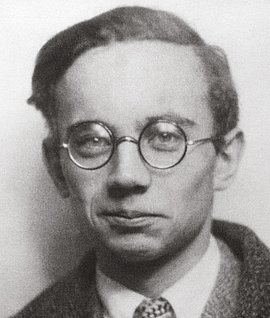
Heinz Strelow was a German journalist, soldier and resistance fighter against the Nazi regime.
Hildegard Jadamowitz, was a German communist activist and a member of the German resistance against National Socialism.
The Baum Group was an anti-Nazi resistance group in Berlin, Germany. The Group's members were mostly Communist, Jewish, and young with many being teenagers or young adults.















